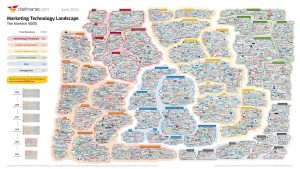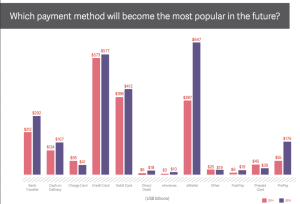
You’re a hot-shot digital marketer. You sit down to the Facebook Ad Manager, and in 30 seconds, your new campaign is humming away. Moments later, sales start piling in from everywhere. Your boss calls you a genius and promotes you, and you’re free to go on vacation while the revenue rolls in!
Then you wake up.
Your Facebook ads should be working for you to increase your promotional audience and create meaningful conversions. Creating great Facebook ads for your business can be a grind, and can take a long time to get good at. Few things are more frustrating to a digital marketer than, after having checked off all the best practices, NO ONE IS BUYING!
If you find your Facebook ads are just not working, here’s what might be going on:
1. Ads Are Not Designed To Meet Your Specific Objective
If your Facebook ads are not yet working for you, check first to see if your ads are designed to meet your exact objective. When you start a Facebook campaign from scratch, the system makes you pick a specific objective such as attaining Page Likes, traffic to your website, or conversions (to a lead or a sale). Though there are similarities, the attributes that make a successful Page Link ad, for example, might not necessarily translate into a successful conversion ad. People will Like pages for very specific reasons.
According to Verticalresponse.com, 45 percent of social media users “Like” brand pages in order to receive a stream of promotions, discounts, giveaways or other exclusive content. So a promotion-oriented ad (a contest or drawing, for example) might work great for a Page Like campaign and even be enough to collect an email address, but might not provide the right kind of incentive needed to get someone to purchase your product.
Are you running a Page Like campaign? If so, make plain the exclusive value that’s available for fans. Coupons and small discounts will work well here. How about a sign-up conversion ad? Make sure you’re directing visitors to a specially designed landing page that offers something valuable (like an ebook download) in exchange for a sign-up.
For an in-depth discussion about designing ads based on a specific strategy, I recommend James Sherer’s excellent guest blog on SocialFresh.
2. The Headline And Copy Do Not Propose Value And Call Visitors To Action
Ad platforms come and go, but the principles of ad copywriting haven’t changed in over a hundred years. If digital advertising didn’t have its intimidating mystique, the veteran print ad copywriters would school us all.
Facebook ad copy works on the same psychological principles as all other headlines:
- Phrase headlines as direct questions when you can.
- Use words like “free,” “exclusive,” and “limited.”
- Get your value proposition out there in one clear sentence. What is your offer? How will my life be better after I sign up for your thing?
One more note: you are free to capitalize entire words on a Facebook ad. This will feel very strange for those of us who cut our teeth on Google Adwords. But it’s allowed and it’s EFFECTIVE!
Good:
“Want Better Leads? – Contact the social media experts who can drive more leads and sales. FREE evaluation!”
Not so good:
“Social Media Agency – Social Media Beast is an effective digital marketing agency for business. Contact us today.”
For more information, Hubspot posted this article highlighting 10 ads that work well, that discusses individual ad attributes like value proposition and call-to-action.
3. You’re Not Offering Any Extra Value
Here comes the second James Scherer quote of the article. He said something in his Wishpond blog that stuck with me: “…a Facebook Ad without an offer is like a Ferrari without wheels.”
As mentioned earlier, people Like Facebook business pages more for promotions and giveaways than for any other reason. One of the biggest contributors to Facebook ads not working is a lack of incentive. With this being said, your ad budget cannot just go towards running ads. If you’re going to disrupt people’s attention and get them to commit to you with a Like, email submission or some other conversion, there should be some value in it for them above and beyond the product or service you provide.
At Social Media Beast, we run quite a few contests and drawings for this reason and we encourage clients looking for an online purchase conversion to regularly run limited time offers (usually price promotions). If you’re interested in running contests or promotions, the 3rd-party app Shortstack is a wonderful tool for integrating content into your Facebook page. Jon Loomer’s Facebook Marketing Blog has a step-by-step how-to for setting up Facebook contests using Shortstack.
4. You’re Not Targeting The Right Group Of People
Facebook ad targeting is both its greatest advantage and biggest pitfall. You can lose an entire afternoon exploring the categories and keywords available to you in the demographic, interest-based and behavioral targeting fields. There is also no bigger frustration than to find the exact interest area you’re trying to reach (say, bankruptcy protection), and getting a 90 percent bounce rate.
When we set up ad campaigns for clients, there’s a balancing act between narrowing in on the most relevant group and having large enough reach to deliver the scale we want. The Facebook Ad relevance score can be a good general indicator of the quality of your targeting. The score is based on an algorithm that compares ad engagements (e.g. clicks) with negative responses like someone hiding the ad from your newsfeed. Low relevancy scores (i.e. 2 or 3 out of 10) in addition to other indicators like high bounce rates, may indicate a targeting problem.
Along with the demographic targeting, you will also need to choose where your ad will display (e.g. news feed, right column, audience network). There is some consensus that News Feed ads, being the biggest, are most likely to generate more qualified leads. But confining ourselves to this network typically has too small a reach for our purposes. The Facebook Audience Network is a website advertiser network similar to Google Adsense, but there is evidence to suggest that it is a much more effective generator of quality traffic than standard display ads.
For more information, check out Jon Loomer’s post on Facebook targeting, broken down by objective.
5. Something Is Wrong With Your Images
This is another tough transition for Adwords users: in social media-land, the image is king.
The Facebook interface makes it very easy to create multiple ads based on the same copy, so that the only difference between ads is the image. And one of the first things you’ll notice is different images generate DRASTICALLY different click-through rates.
First of all, a technical note: make sure all your ad images are the right size. Make everything 1200 x 628 pixels, unless it’s specifically a Page Like ad. Page Like and Event Response ads go off at 1200 x 444. If you do use off-sized or stock art, make sure you go through the step of repositioning the crop when you create the ad. When you’re going fast, it’s very easy to create an ad that’s focused on the wrong part of the picture. When we run ads for clients, we obviously work up special images that are polished, with the client logo prominent. Polish seems to rule in this field.
It might seem obvious, but if you use images of people, make sure they match your targeted demographic and are smiling (unless there’s a specific reason not to smile). Also, prominent warm colors tend to work best because Facebook’s color scheme is a cool blue-and-white, and you want to stand out. Also, the old adage of children and pets holds true in social media.
The best thing you can do in this area is test and Facebook makes this pretty easy. When you create the ad, upload the maximum 6 images. In a few days, you’ll see that one or two of the images will dominate the ad group. Delete the others and create ads with images that are similar to the ones proving effective.
For more best practices on images, look at this article from Wishpond.
(396)






